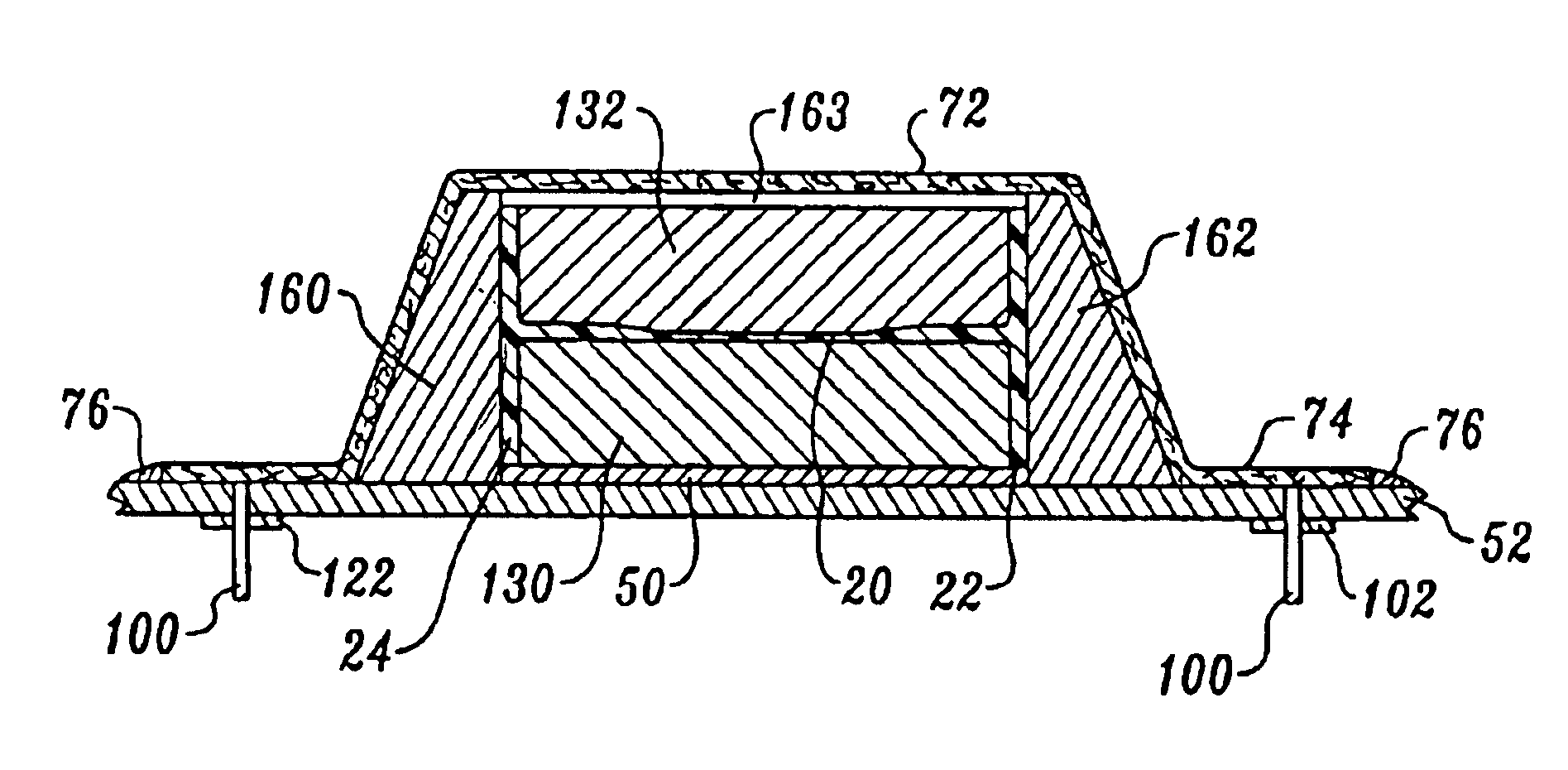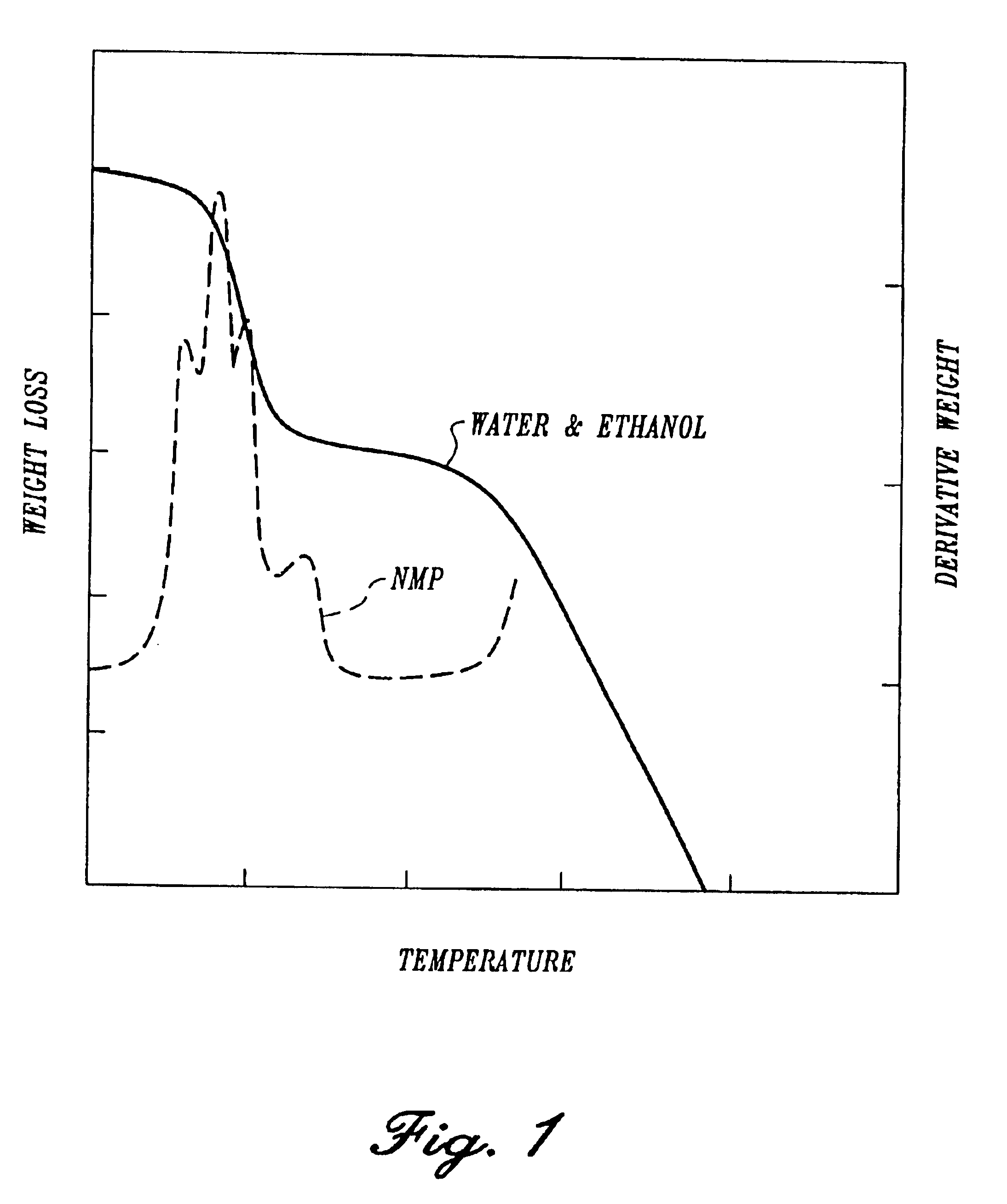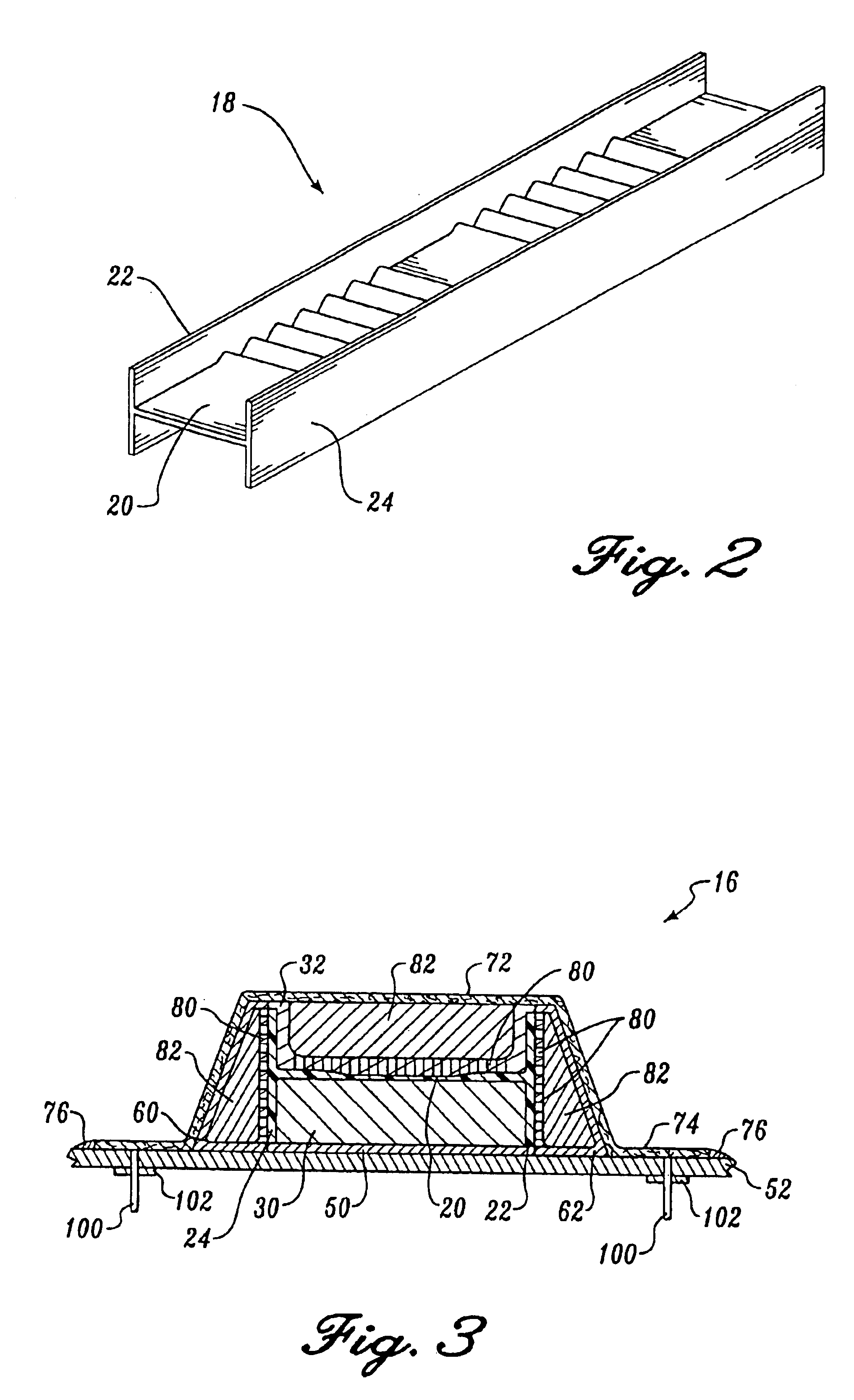Method for forming composite parts from volatile-emitting materials using breathable tooling
a technology of volatile-emitting materials and tooling, which is applied in the field of forming and curing composite materials, can solve the problems of low damage tolerance, composite materials with relatively high fabrication costs, and low damage tolerance, and achieve the effect of dimensional toleran
- Summary
- Abstract
- Description
- Claims
- Application Information
AI Technical Summary
Benefits of technology
Problems solved by technology
Method used
Image
Examples
Embodiment Construction
The present invention is a method and apparatus to form and cure composite materials that produce large quantities of volatiles during processing. The invention is described below with respect to a preferred embodiment used to form a sine wave spar. However, the method and apparatus of the invention may be used to form a wide variety of composite structures. The preferred embodiment is also described with respect to the use of DuPont's K-IIIB material system. However, the invention may be used with other composite material systems.
FIG. 2 illustrates a sine wave spar 18 fabricated using a breathable tooling concept (FIG. 3) according to the invention. As best illustrated in FIG. 2, the sine wave spar 18 is an I-beam having a sine wave central web 20 that extends between left and right spar caps 22 and 24, respectively.
In the preferred embodiment, it is important to maintain dimensional tolerances on the surfaces of the spar caps 22 and 24 and central web 20. In order to maintain such...
PUM
| Property | Measurement | Unit |
|---|---|---|
| Fraction | aaaaa | aaaaa |
| Temperature | aaaaa | aaaaa |
| Force | aaaaa | aaaaa |
Abstract
Description
Claims
Application Information
 Login to View More
Login to View More - R&D
- Intellectual Property
- Life Sciences
- Materials
- Tech Scout
- Unparalleled Data Quality
- Higher Quality Content
- 60% Fewer Hallucinations
Browse by: Latest US Patents, China's latest patents, Technical Efficacy Thesaurus, Application Domain, Technology Topic, Popular Technical Reports.
© 2025 PatSnap. All rights reserved.Legal|Privacy policy|Modern Slavery Act Transparency Statement|Sitemap|About US| Contact US: help@patsnap.com



